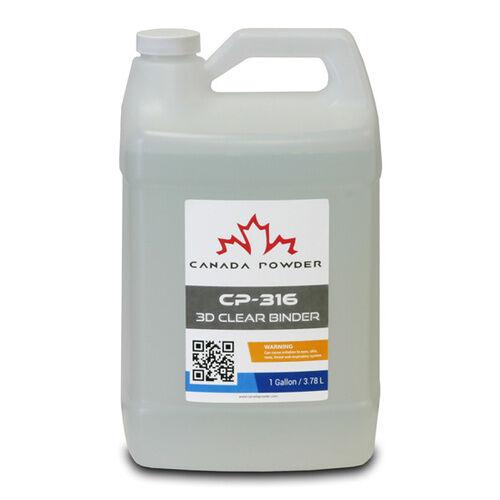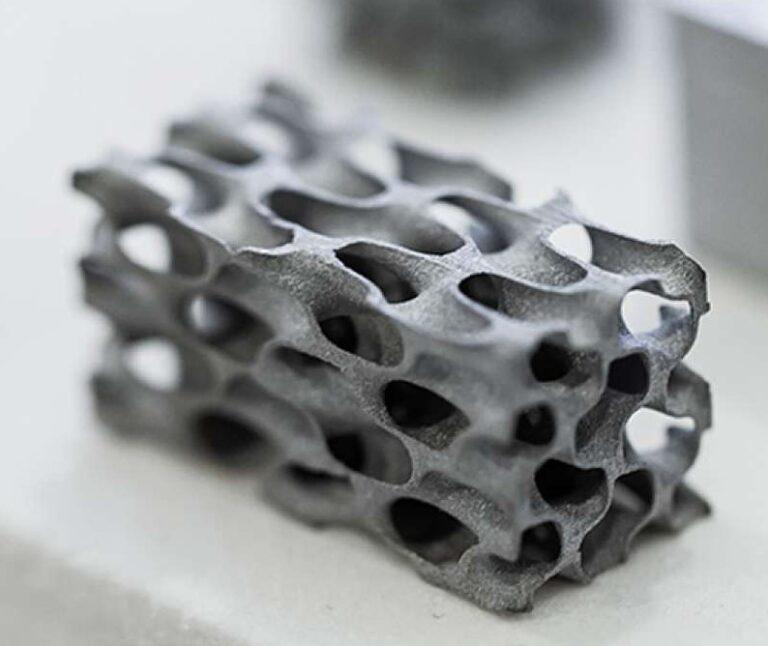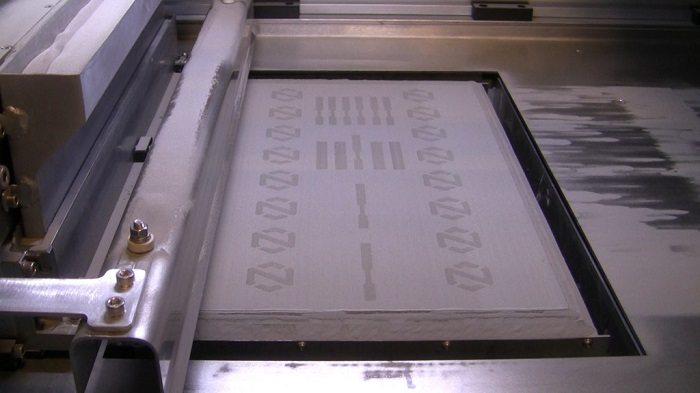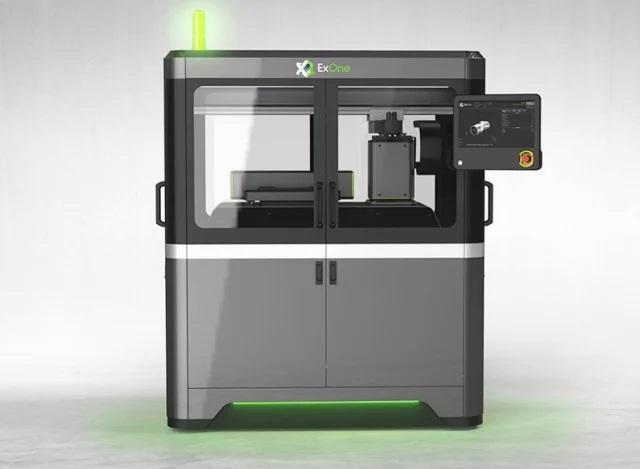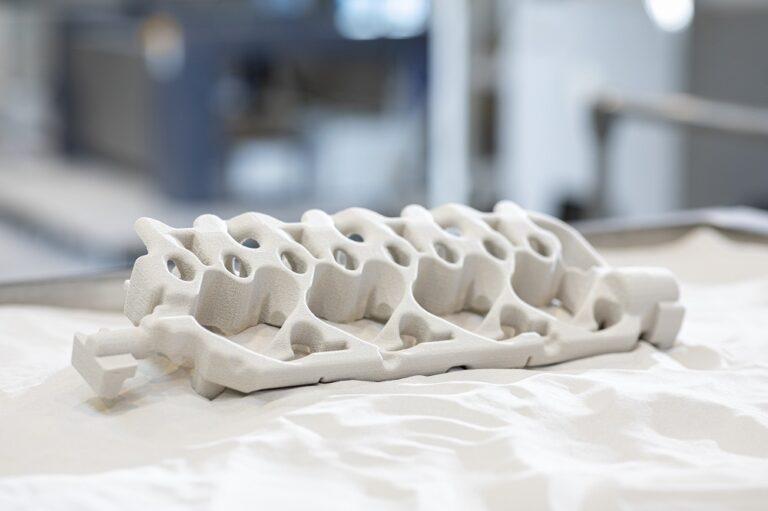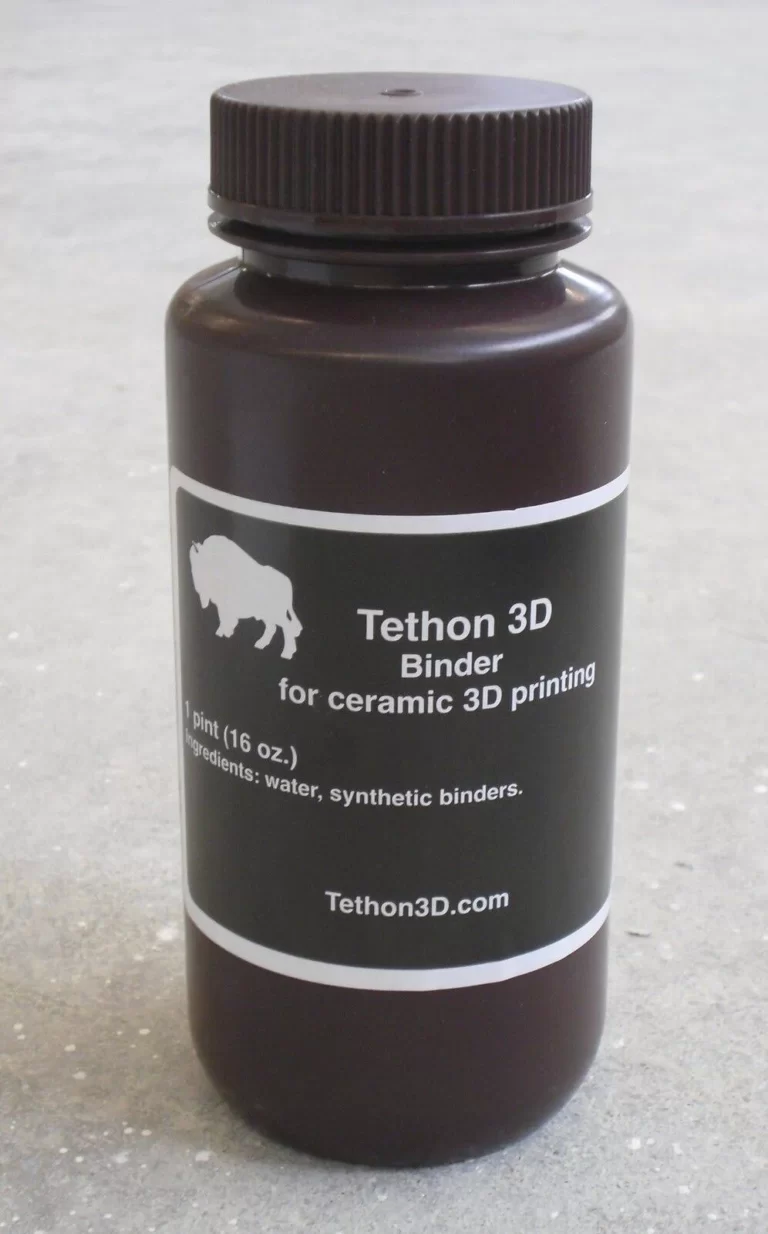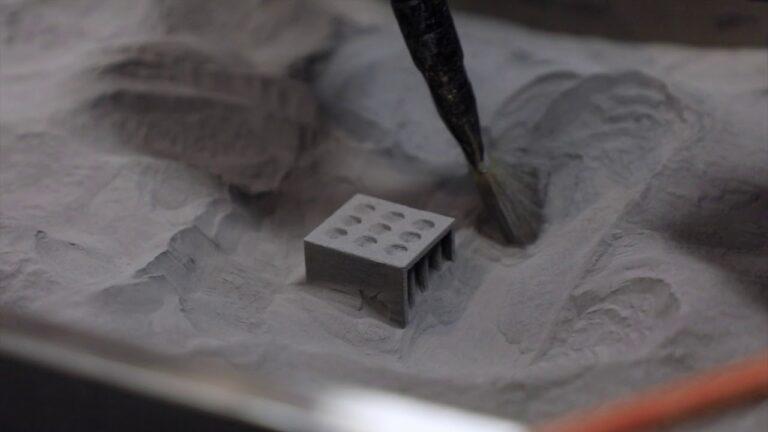Introduction for Part 2
In the first part of this post, we explored the various types of binders used in Binder Jetting, as well as their applications and advantages and disadvantages. As we continue our journey into the world of Binders for Binder Jetting, we will delve deeper into the key properties and selection criteria that are crucial to consider when choosing a binder for this 3D printing process. Additionally, we will examine some of the common materials used in Binder Jetting and their compatible binders, as well as discuss the environmental and health considerations for binders. Finally, we will explore the latest advancements and innovations in binder technology and provide a future outlook for this rapidly evolving field.
Key Properties and Selection Criteria for Binders
The choice of the binder has a significant impact on the performance and quality of the printed parts, making it a crucial step in the Binder Jetting procedure. Key characteristics of binders, including viscosity, drying and curing speeds, and mechanical qualities, greatly influence the usefulness of a binder for a particular application. We’ll look at popular materials and their compatible binders in this part, as well as the essential characteristics and selection criteria for binders used in Binder Jetting. Being aware of these considerations can aid in selecting the best binder for achieving the desired print quality and performance.
Viscosity
Viscosity is a key property of binders for binder jetting that refers to the material’s resistance to flow. In the context of binder jetting, viscosity is critical to achieving accurate and precise deposition of the binder onto the powder material. A binder with low viscosity may spread too much and result in distorted parts, while a high-viscosity binder may not spread enough and lead to weak or brittle parts.
The viscosity of the binder also plays a crucial role in its compatibility with different powder materials. For example, ceramic powders typically require binders with a higher viscosity to achieve the desired green strength, while metal powders may require lower-viscosity binders to avoid clogging the printhead. In general, finding the right balance between viscosity and powder compatibility is essential for successful binder jetting.
In addition to viscosity, other factors such as drying and curing rates, compatibility with powder material, and mechanical properties, also influence the selection of binders for binder jetting. Ultimately, the choice of binder will depend on the specific application and desired properties of the final printed parts.
Drying and curing rates
Drying and curing rates are crucial properties of binders for Binder Jetting. The drying rate refers to the speed at which the binder evaporates, leaving behind a solidified layer of material. The curing rate refers to the time required for the binder to achieve its final strength and stability.
The selection of binders with optimal drying and curing rates is essential to ensure that the printed parts maintain their shape and do not distort during subsequent layers’ deposition. Different materials require different drying and curing rates, and a mismatch between the binder and the powder material can lead to poor adhesion and weak or brittle printed parts.
Selecting a binder with the appropriate drying and curing rates for the specific powder material being used is important to achieve precise dimensions and high-quality printed parts. Some binders may require post-processing steps, such as curing or sintering, to achieve the desired final properties.
In conclusion, the drying and curing rates of binders are critical factors to consider when selecting a binder for Binder Jetting. Proper selection can result in high-quality printed parts with excellent strength and structural integrity.
Compatibility with the powder material
Compatibility with the powder material is a critical factor in selecting binders for binder jetting. The specific powder material being used, such as metal, ceramic, sand, or polymer, must adhere to the binder. Incompatibility between the binder and the powder can lead to poor adhesion, resulting in weak or brittle printed parts. This can also cause issues with powder spreading, leading to uneven layer thickness and inaccurate printed parts.
Different powder materials require different binders, and selecting the appropriate binder for each material is essential for achieving high-quality printed parts. Compatibility can also depend on the particle size and shape of the powder material, as well as the binder’s viscosity and surface tension. It is important to test the compatibility of the binder and powder material before beginning the printing process to ensure successful results.
Overall, the compatibility of binders with powder materials is crucial for achieving accurate and high-quality printed parts in binder jetting. It is important to consider the properties of both the binder and the powder material to select a compatible combination for optimal printing results.
Mechanical properties
Mechanical properties are an important consideration when selecting binders for binder jetting. These properties determine the strength, stiffness, and durability of the final printed parts. To ensure the desired characteristics of the final part, the binder must be compatible with the powder material used, affecting its mechanical properties.
The properties of the binder that affect mechanical properties include its curing and drying rates, as well as its adhesion to the powder particles. A binder with a slow curing rate may result in a weaker part due to insufficient crosslinking between the binder molecules. On the other hand, a binder with a fast curing rate may not allow enough time for the powder particles to consolidate properly, leading to porosity and reduced mechanical properties.
The adhesion of the binder to the powder particles is also critical for achieving good mechanical properties. If the binder does not adhere well to the powder particles, the final part may suffer from delamination or weak interlayer bonding.
Different types of binders have different mechanical properties, and the choice of binder will depend on the specific application and requirements of the printed part. For example, applications that require high strength may prefer a binder with high tensile strength and stiffness, while applications that prioritize flexibility may find a binder with good elasticity more appropriate.
In summary, the mechanical properties of the binder play a crucial role in determining the strength and durability of the final printed part. Compatibility with the powder material and appropriate curing and drying rates are important considerations when selecting a binder for binder jetting.
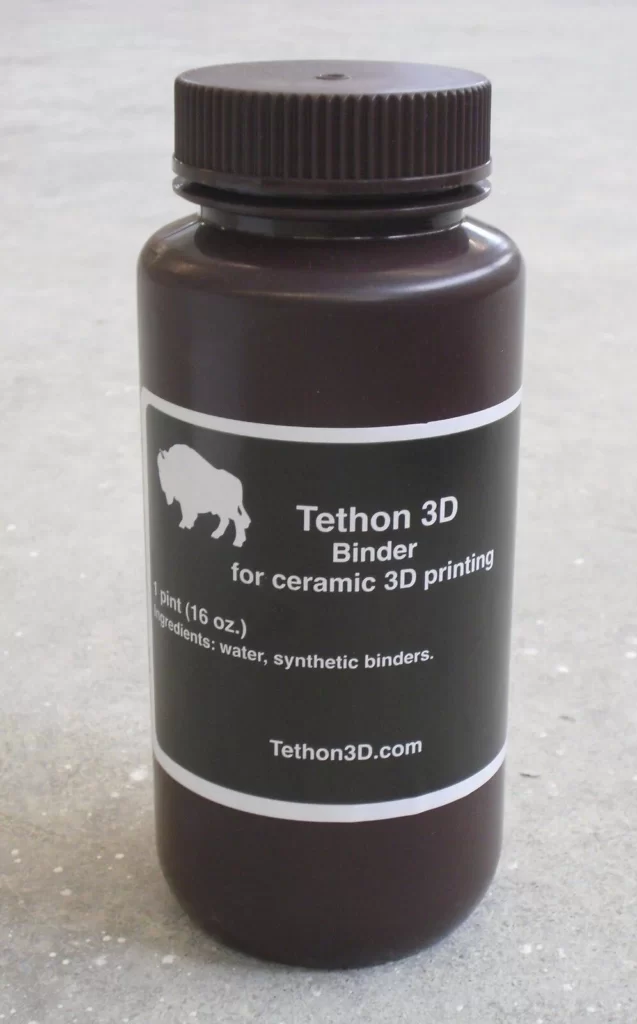
Common Binder Jetting Materials and Their Compatible Binders
Binder jetting is a 3D printing technology that allows for the production of complex geometric shapes with a wide range of materials. The process involves depositing a binder onto a bed of powder material, layer by layer, to form a green part. The green part is then dried and sintered to create the final part. The binder used in the process is a critical component that can significantly impact the quality and properties of the final part. In this section, we will discuss the common binder jetting materials, including metals, ceramics, sand, and polymers, and their compatible binders.
Metals
Binder jetting 3D printing technology widely utilizes metal powder materials. In this process, the binder material binds the metal powders together to create a solid object. The selection of a suitable binder is crucial for achieving the desired mechanical properties and overall quality of the final product.
Commonly used binder materials for metal powder include epoxy, acrylic, and polyester resins. Epoxy resins possess high mechanical strength and low shrinkage, making them a suitable choice for printing small and intricate metal parts. Users prefer acrylic resins for their low viscosity and fast curing times, which enables the printing of larger metal parts. Polyester resins, known for their low cost and high flexibility, are also commonly used in binder jetting.
It is important to note that the compatibility of the binder material with the metal powder material is crucial for achieving high-quality printed parts. For example, some metals, such as titanium, are highly reactive and require a binder material that can withstand high temperatures and pressures. In contrast, other metals, such as aluminum, require a binder material with a low viscosity and good wetting properties.
Overall, the selection of suitable binder material for metal powder materials requires careful consideration of various factors such as the desired mechanical properties, curing time, and compatibility with the metal powder material.
Ceramics
Using binders, the popular 3D printing technique known as “Binder Jetting” assembles powdered components into complicated parts layer by layer. There are numerous binder choices that work with various kinds of powders when it comes to ceramic materials. Water-based binders, alcohol-based binders, and organic binders are a few of the often employed binders for ceramic powders.
Due to their low toxicity and high reactivity with ceramic powders, water-based binders are frequently chosen for ceramic applications. They can produce parts with high green strength and are simple to blend with powders. Additionally employed in ceramic binder jetting, alcohol-based binders provide excellent resolution and fine feature details. To create parts with high mechanical strength and stability, organic binders like polyvinyl alcohol (PVA) and polyethylene glycol (PEG) are utilized.
The choice of binder is influenced by the type of ceramic powder being used and the desired qualities of the finished product. For example, certain binders excel in creating strong components, while others are more suitable for producing intricately detailed parts. For ceramic binder jetting to be successful, it is essential to comprehend the characteristics of various binders and how they interact with ceramic powders.
Sand
In binder jetting 3D printing, users commonly use sand as a material due to its availability and low cost. To create objects from sand, users need a binder material to hold the particles together. The choice of binder depends on the desired properties of the final object. Users commonly use water-soluble binders like polyvinyl alcohol (PVA) and carboxymethyl cellulose (CMC) for sand due to their ease of dissolution and removal. Other binders like furfuryl alcohol (FA) can produce stronger, more durable objects but require additional curing steps. Additionally, resin binders like phenolic resins can be used for sand, but require high-temperature curing.
It’s important to choose a binder that is compatible with the sand being used. For example, fine-grained sands may require binders that penetrate deeper into the sand particles to create a strong bond. Coarser sands may require binders that provide a more superficial bond. It’s also important to consider the environmental impact of the binder, as some binders may release harmful fumes during curing.
Overall, selecting the binder for sand in binder jetting 3D printing relies on the desired properties of the final object and the characteristics of the sand being used. By carefully selecting the right binder, it’s possible to create strong and durable sand-based objects for a variety of applications.
Polymers
Binder Jetting is a popular 3D printing technique used to create objects layer by layer. The process involves spreading a layer of powdered material (such as metals, ceramics, sand, or polymers) and using a binder to selectively bond the particles together. The choice of binder is crucial as it directly affects the properties of the final printed object. In this section, we will discuss the commonly used binders for polymer powders in Binder Jetting.
Polymer powders require binders that can effectively bond the particles together without compromising the properties of the final printed object. One of the commonly used binders for polymers is polyvinyl alcohol (PVA). PVA is a water-soluble polymer that is widely used as a binder for polymer powders due to its excellent bonding properties and compatibility with various types of polymers.
Another popular binder for polymer powders is acrylate-based resin. This binder is used in combination with UV light to cure and solidify the printed object. Acrylate-based resins offer good mechanical properties and are compatible with a wide range of polymer powders.
In addition to using PVA and acrylate-based resins, manufacturers also utilize starch and gelatin as binders for polymer powders. These binders possess distinctive properties and are frequently combined with other binders to attain the desired outcomes.
In conclusion, the choice of the binder for polymer powders in Binder Jetting is crucial in determining the mechanical, chemical, and physical properties of the final printed object. Therefore, it is essential to consider the compatibility of the binder with the powder material when selecting a binder for Binder Jetting.
Environmental and Health Considerations for Binders
In the area of additive manufacturing, binder jetting is a fast-developing technology with numerous applications across numerous sectors. Binder jetting, like all manufacturing techniques, has some environmental and health issues that must be taken into account. The selection of binders can influence the process’s sustainability and safety, so we’ll talk about why it’s crucial to use safe and secure binders for binder jetting in this part. We will also discuss the possible health risks connected to specific binders and the safety measures that must be implemented to protect both operators and the environment.
Safety measures
It’s crucial to follow safety precautions while dealing with binders in binder jetting 3D printing to safeguard both the environment and the people handling the materials. The possibility of breathing in binder particles, which can cause respiratory problems, is one of the main worries. It is advised to employ suitable ventilation and put on the correct personal protective equipment, such as masks or respirators, to reduce this danger. Additionally, since some binders could be combustible or reactive with other substances, it’s crucial to handle and store them properly. To avoid environmental pollution, it is necessary to dispose of unused or extra binders properly. You can safely and responsibly perform binder jetting 3D printing by following these safety precautions.
Disposal and recycling of binders
When using binders in binder jetting 3D printing, you should take into account the consequences of disposing and recycling them on the environment and human health. You should consider them as hazardous waste and handle and dispose of them accordingly, depending on the specific binder you are using. In order to protect the environment and the general public’s health, it is crucial to adhere to local legislation and recommendations for proper disposal.
Binder recycling can also be difficult because it frequently calls for specific tools and methods. While certain binders might be reusable during the same printing process, others might need additional processing or care before they can be used again. In some circumstances, using new binders instead of used ones may be more practical.
Use binders that are as environmentally friendly as possible to reduce the negative effects of binder disposal and recycling. Choosing non-toxic, biodegradable, and/or readily recyclable binders falls under this category. The amount of waste produced can also be decreased through printing and binder usage that is as efficient as possible.
Overall, employing binder jetting technology for 3D printing while being ecologically conscious requires correct binder disposal and recycling. It’s critical to take into account the potential effects of the binders used on the environment and human health and to employ correct handling and disposal techniques to reduce damage.
Eco-friendly binder alternatives
As the environmental impact of 3D printing becomes increasingly relevant, finding eco-friendly alternatives to traditional binders used in binder jetting is becoming more important. Several sustainable binder options are now available, such as water-based binders and binders made from natural or renewable resources, including proteins and polysaccharides. These types of binders can be biodegradable, reduce greenhouse gas emissions, and have lower health risks for workers and the environment. Additionally, there are efforts to develop new types of binders using waste materials and other innovative solutions to reduce the environmental impact of binder jetting. By utilizing eco-friendly binders, the 3D printing industry can reduce its carbon footprint and create a more sustainable future.
some Examples of Eco-friendly binders
Here are a few illustrations of green binders along with brief descriptions of each:
- Binders made of starch: Starch-based binders, derived from corn, potatoes, or other natural sources, provide strong mechanical and adhesive qualities in binder jetting. These binders utilize starch, a naturally occurring and biodegradable polymer.
- Cellulose is a different natural polymer that can be utilized in binder jetting as a binder. Cellulose-based binders. Cellulose-based binders can be made from sources including cotton, wood, or other plants. They can provide strong adhesion and mechanical qualities and are renewable and biodegradable.
- Protein-based binders: Protein-based binders provide an environmentally beneficial alternative to synthetic binders, which can be derived from natural sources such as milk or soy. These binders can provide strong adhesion and mechanical qualities and are renewable and biodegradable.
- Water-based binders: Water-based binders offer a renewable and environmentally friendly alternative to synthetic binders for binder jetting. Users can utilize water-based binders with a wide range of materials, including metals, ceramics, and polymers.
Overall, adopting environmentally friendly binders can help minimize the negative environmental effects of binder jetting technology, and there are a lot of potential possibilities out there for producers and researchers to investigate.
Advancements and Innovations in Binders for Binder Jetting
In recent years, there have been significant advancements and innovations in binders for binder jetting, a popular 3D printing technique. These developments have revolutionized the field and opened up new possibilities for manufacturing. Binders for binder jetting play a crucial role in the printing process, as they are responsible for binding the powdered material together to create solid objects.
New binder materials and formulations
One notable advancement is the introduction of novel binder materials and formulations. Researchers and manufacturers have been experimenting with various combinations of polymers, resins, and additives to improve the performance and properties of binders. These advancements have led to enhanced print quality, increased part strength, and improved surface finish.
Smart binders and self-healing materials
Another area of innovation is the development of smart binders and self-healing materials. Smart binders can exhibit responsive behavior, such as changing their properties in response to external stimuli like temperature or light. Self-healing materials, on the other hand, have the ability to repair themselves when damaged. These advancements have the potential to revolutionize the durability and functionality of printed objects.
Furthermore, advancements in binder jetting technology have led to improved precision and accuracy in the printing process. This includes the development of advanced printing systems, optimized printing parameters, and sophisticated software algorithms. These innovations have resulted in finer details, tighter tolerances, and better overall dimensional accuracy of printed parts.
Overall, the advancements and innovations in binders for binder jetting have paved the way for more versatile, efficient, and sustainable 3D printing processes. Researchers and industry professionals’ continuous exploration of new possibilities and pushing the boundaries of what binders can achieve in additive manufacturing leads to exciting prospects for the future.
Future Outlook and Challenges for Binders in Binder Jetting
The future outlook for binders in binder jetting holds great promise and potential for further advancements in additive manufacturing. As technology continues to evolve, there are several key areas that researchers and industry professionals are focusing on to address challenges and drive innovation.
One of the primary areas of interest is the development of new binder materials and formulations. Researchers are exploring alternative binders that offer improved mechanical properties, enhanced compatibility with different types of powdered materials, and reduced environmental impact. This includes the investigation of bio-based binders, recyclable binders, and binders with enhanced biodegradability.
optimization of binder jetting processes and parameters
Another important aspect is the optimization of binder jetting processes and parameters. Researchers are working towards achieving higher print speeds, finer resolution, and increased production efficiency. This involves refining printing techniques, improving powder spreading mechanisms, and enhancing the control of binder application.
multi-material and multi-functional binder systems
Additionally, there is a growing focus on multi-material and multi-functional binder systems. This includes the ability to print objects with varying material properties or the integration of additional functionalities, such as conductive or magnetic properties, within printed parts. These advancements will enable the production of complex, customized objects with diverse applications.
While the future outlook for binders in binder jetting is promising, there are also challenges to overcome. One of the main challenges is ensuring consistent and reliable material properties throughout the printing process. This requires careful control of binder distribution, powder adhesion, and curing parameters.
Furthermore, there is a need for standardized testing methods and characterization techniques to evaluate the performance and quality of binder-jetted parts. This will enable better comparability between different binder systems and facilitate the adoption of binder jetting in various industries.
Overall, experts anticipate that binders in binder jetting will bring forth exciting developments and advancements in the future. Continued research and collaboration will play a crucial role in overcoming challenges and unlocking the full potential of binder jetting technology in additive manufacturing applications.
Upcoming trends and research directions
Rapid advancements and exciting future trends and research directions are driving the field of binders for binder jetting. Researchers and industry experts are actively exploring various areas to further enhance the capabilities and applications of binder jetting technology.
One emerging trend is the development of functional binders with specialized properties. This includes the exploration of binders with improved adhesion strength, thermal stability, and chemical resistance. By tailoring the binder formulation, it becomes possible to achieve precise control over material properties and enable the production of high-performance parts.
Another significant trend is the integration of post-processing techniques into the binder jetting workflow. Researchers are investigating methods such as heat treatment, sintering, or infiltration processes to enhance the mechanical properties and surface finish of binder-jetted parts. This integration of post-processing steps enables the production of fully functional and high-quality end-use products.
Furthermore, there is a growing emphasis on sustainability and eco-friendly approaches in binder jetting. Researchers are exploring bio-based and biodegradable binders, as well as investigating methods to reduce material waste and improve the recyclability of printed objects. These efforts aim to minimize the environmental impact of binder jetting processes and promote sustainable manufacturing practices.
Regarding research directions, researchers are currently focusing on optimizing process parameters for binder jetting, which include techniques for powder spreading, control of binder distribution, and methods for curing. Improving these aspects will lead to higher accuracy, resolution, and production efficiency in binder jetting technology.
Additionally, there is a need for further research on material characterization and performance evaluation of binder-jetted parts. This involves developing standardized testing protocols to assess mechanical strength, surface finish, dimensional accuracy, and other critical properties. Such research efforts will facilitate the adoption of binder jetting in a wide range of industries and applications.
Barriers to Adoption and Areas for Improvement
The adoption of binders for binder jetting technology has been accompanied by several barriers that hinder its widespread implementation. These barriers arise from various factors, including technical limitations, material constraints, and economic considerations. However, there are also significant areas for improvement that can address these challenges and enhance the overall effectiveness and applicability of binders for binder jetting.
limited range of materials
One major barrier is the limited range of materials compatible with binder jetting. Researchers are currently focusing their efforts on developing new binder formulations and expanding the range of compatible materials to overcome the limited availability of binders suitable for a wide range of materials, including metals, ceramics, polymers, and composites. This will enable a broader diversity of applications and materials to be effectively utilized in binder jetting processes.
dimensional accuracy
Another barrier is the resolution and dimensional accuracy of binder jetted parts. Achieving high-resolution prints with precise geometries can be challenging due to the limitations of binder deposition and curing techniques. Improving the resolution and dimensional accuracy will open up new possibilities for applications requiring intricate details and precise tolerances. Research is ongoing to optimize process parameters, develop advanced binder deposition methods, and enhance post-processing techniques to overcome this barrier.
cost
Cost is another significant factor influencing the adoption of binders for binder jetting. Currently, binder jetting processes can be costly, especially for high-volume production. This is due to the costs associated with binder materials, post-processing steps, and equipment maintenance. To address this barrier, researchers and industry experts are actively developing cost-effective binder formulations, fine-tuning process parameters to minimize material waste, and enhancing the efficiency of post-processing steps.
standardization and certification
Moreover, there is a need for standardization and certification of binder jetting processes and materials. Lack of standardized testing protocols and quality assurance measures pose challenges in ensuring consistent and reliable performance of binder-jetted parts. Establishing industry standards and certifications will enhance confidence in the technology and facilitate its adoption across various sectors.
In summary, the barriers to the adoption of binders for binder jetting include limited material compatibility, resolution and dimensional accuracy constraints, high costs, and the need for standardization. However, researchers and developers are actively addressing these barriers by developing new binder formulations, optimizing process parameters, implementing cost-reduction strategies, and establishing standardized testing and certification procedures. By overcoming these barriers and continuously improving the technology, binders for binder jetting can achieve broader acceptance and unlock their full potential in additive manufacturing applications.
Conclusion
In conclusion, binders are crucial in the binder jetting process, enabling complex and functional part production through additive manufacturing. During our exploration, we delved into key properties and selection criteria for binders, as well as their compatibility with different powder materials. Additionally, we discussed important considerations like viscosity, drying and curing rates, and mechanical properties. Furthermore, we thoroughly examined environmental and health aspects, along with the processes of disposal and recycling. Lastly, we explored the availability of eco-friendly binder alternatives.
Binders for binder jetting hold great potential in the aerospace, automotive, healthcare, and consumer goods industries. However, challenges remain. Expanding material compatibility, enhancing resolution and accuracy, reducing costs, standardizing certification procedures, and addressing environmental concerns is vital.
Collaboration and investment are necessary for further advancements. Research and development should focus on optimizing binder formulations, process parameters, and post-processing techniques. Sustainable practices and eco-friendly binders can reduce environmental impact.
Remaining informed, sharing knowledge, and actively contributing is essential for progress. Innovation, sustainability, and collaboration are key to unlocking the full potential of binders in additive manufacturing.
Let’s commit to shaping the future of binder jetting through innovation, sustainability, and collaboration. Together, we can revolutionize additive manufacturing, unleashing new possibilities for manufacturing and design.
How to ensure safety measures when working with binders in binder jetting?
- Wear Personal Protective Equipment (PPE)
Wear PPE (safety glasses, gloves, lab coat) before binder jetting to minimize risks and protect against hazards.
- Maintain Proper Ventilation
To prevent the accumulation of fumes or vapors released during the binder jetting process, ensure that you have a well-ventilated workspace. Use exhaust fans or work in a dedicated fume hood to remove any potentially harmful airborne substances.
- Follow Handling Guidelines
Follow the manufacturer’s guidelines and material safety data sheet (MSDS) for the binder. Know storage, handling, and disposal procedures for safe usage.
- Clean Spills Immediately
In the event of a binder spill, promptly clean it up following proper spill cleanup procedures. Use appropriate absorbent materials and dispose of them in accordance with local regulations. Avoid contact with bare skin and ensure proper containment and disposal.
- Train and Educate Personnel
Ensure thorough training for all personnel involved in binder jetting. Educate them on hazards, safe handling, emergency procedures, and safety equipment. Regularly update and refresh their knowledge of safety protocols.
- implement Fire Safety Measures
Have appropriate fire safety measures in place, such as fire extinguishers and fire suppression systems, in case of an emergency. Ensure that personnel receive training in fire safety procedures and are familiar with the location of emergency exits.
- Conduct Regular Equipment Maintenance
Regularly inspect and maintain the binder jetting equipment to ensure it is in proper working condition. Follow the manufacturer’s recommendations for maintenance and calibration to minimize potential safety risks associated with equipment failure.
- Establish Emergency Response Protocols
Develop and communicate clear emergency response protocols to handle incidents or accidents involving binders. Designate responsible personnel, provide training on emergency procedures, and keep emergency contact information readily accessible.
FAQs
Common binders used in binder jetting include water-based binders, organic binders, and polymer-based binders.
The viscosity of the binder affects the flowability and spreading behavior of the binder on the powder material. It plays a crucial role in achieving accurate and uniform layer formation during the printing process.
It is important to wear appropriate personal protective equipment (PPE) such as gloves, goggles, and masks when handling binders. Adhere to the manufacturer’s guidelines for safe handling, storage, and disposal. Maintain a clean and well-ventilated working environment.
Some binders used in binder jetting can be recycled, depending on the specific type and composition of the binder. However, it is important to follow proper recycling procedures and consider environmental regulations.
Yes, there are eco-friendly binder alternatives available, such as bio-based binders or binders derived from renewable sources. These alternatives aim to reduce environmental impact and promote sustainable manufacturing practices.

